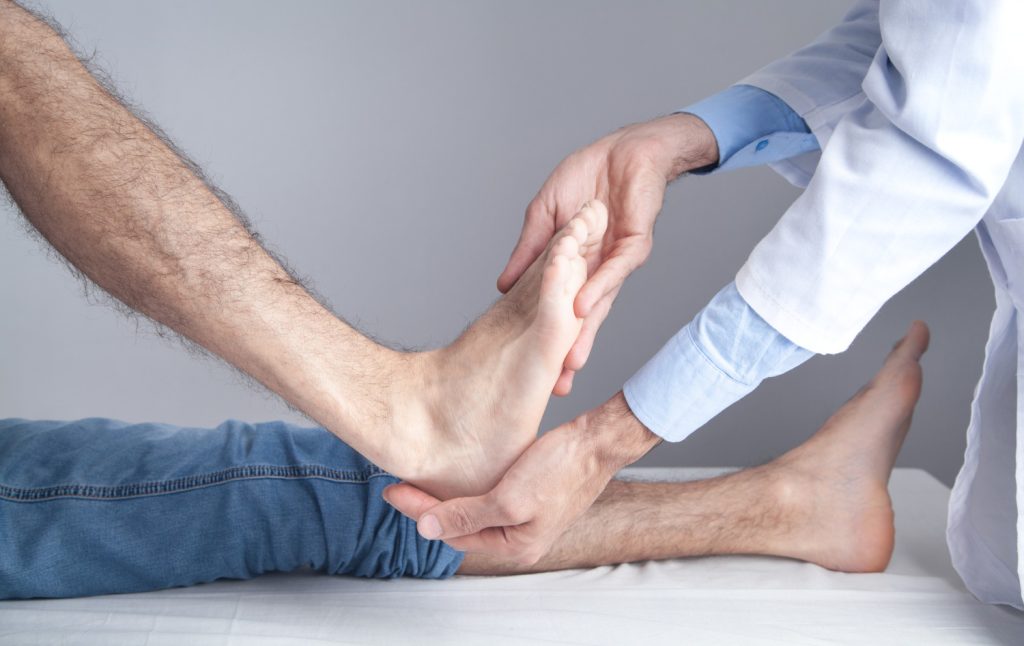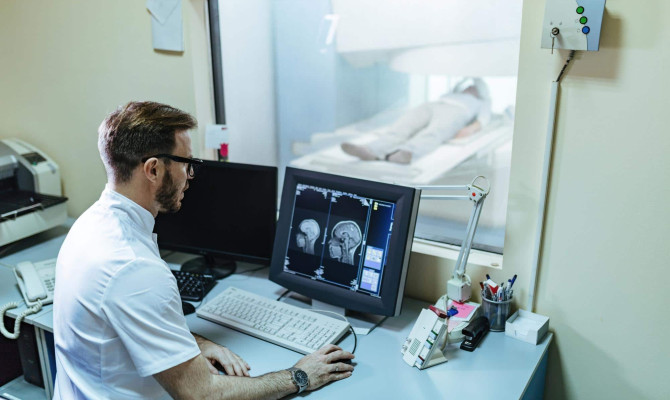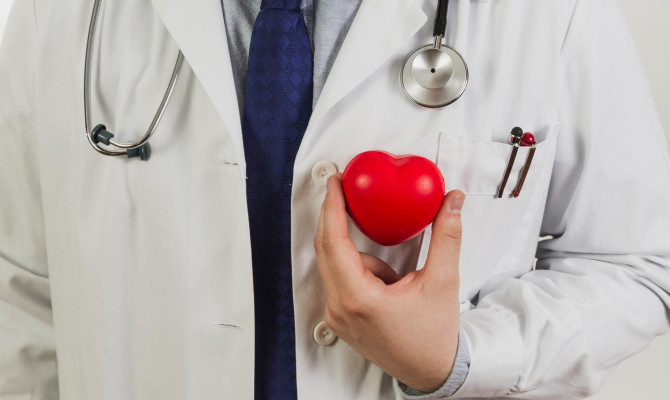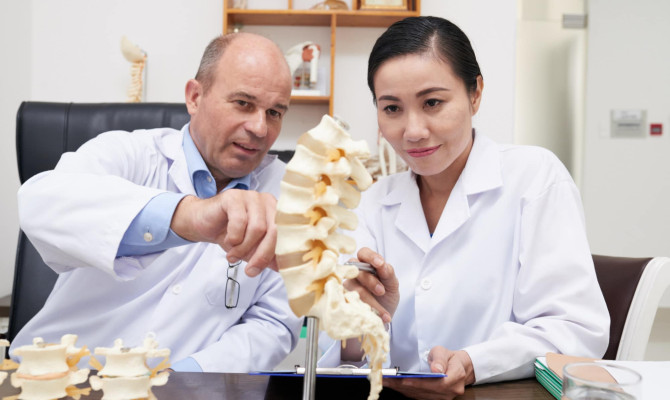Everything You Need To Know About Gout In Heel

- Gout
- 09 Oct 2023
Overview
Gout
Gout is a kind of arthritis that usually affects the joint at the big toe base and brings about extreme soreness, discoloration, puffiness, and hardness. However, gout can also affect other body parts viz; the heel. Gout results from the excess accumulation of uric acid that forms a compound called urate crystals in the body parts. Gout incidents can come suddenly and can cause severe aches if left untreated. Gout usually settles in a couple of days or weeks, but gout sudden outbursts (flare-up) events cause a lot of soreness. Gout also has specific periods of remission. Remission is when a person has no disease symptoms at a particular time. When people have ache in heels the foremost thought that might come to their mind is the circumstance that caused the pain but there are chances that it might be gout pain 1 Overview | Researched based study from National Institutes of Health .

The article will discuss gout in heel, its symptoms, causes and treatment, and some home remedies for people with the condition. It will also discuss some popular queries people would like to know about gout in the heel.
Symptoms
What are the Symptoms of Gout in the Heel?
The sudden gout attack might continue for several days and weeks. Extended periods without symptoms may last for months before the second gout attack. Gout usually occurs at a single joint on one occasion but might give the same signs at several body sites. Some of the common symptoms of gout in the heel are listed below-
- Extreme pain in the ankle, knee, big toe
- Skin discoloration
- Tenderness and redness
- Burning sensation in the affected part
- Puffiness in the affected area 2 Symptoms | Researched based study from Centers for Disease Control and Prevention .
Early-stage gout in heel symptoms:
The initial stage of a gout attack might show some signs in the affected part.
Some of the common signs of early-stage gout in the heel are as follows:
- Redness and tenderness of the affected area
- Swelling and pain
- Warmness of the affected part
- Increased pain intensity during rest
- Trouble moving the joints 2 Symptoms | Researched based study from Centers for Disease Control and Prevention .
Causes
What Causes Gout in the Heel?
- The prime cause of gout is hyperuricemia. Hyperuricemia is when an individual has increased uric acid levels in the blood.
- Uric acid is the body’s unwanted material produced from the breaking down of purine-containing foods viz; seafood, red meat.
- In an average individual, most uric acid gets excreted through urine, but the unwanted uric acid forms a cluster of urate crystals in a diseased individual. Eventually the urate crystals stay in the joints and causes extreme soreness and gout. However, urate crystals can also accumulate in the kidneys to create kidney stones.
Some factors that can lead to gouts are as follows:
- High blood pressure
- Diabetes
- Kidney issue
- Increased weight
- Purine rich diets
- Certain medications
- Hereditary (gout disease run in families) 3 Causes | Researched based study from National Institutes of Health .
Diagnosis
Diagnosis of Gout in the Heel
The physician identifies gout in patients by doing a routine physical examination, enquiring about present and past history of medications and family history. He might then order specific tests to confirm the gout disease.
X-ray
- The X-ray imaging helps exclude other conditions that could lead to pain and swelling.
Blood test
- The test verifies the blood levels of uric acid and creatinine (chemical waste filtered by the kidneys)
Dual-energy CT-scan
- The imaging test can identify urate crystals even without pain and swelling.
Musculoskeletal Ultrasound
- The ultrasound technique helps identify the urate crystals in the affected body parts 4 Diagnosis | Researched based study from National Institutes of Health .
Gout in heel or plantar fasciitis
- Both gout in the heel and plantar fasciitis are ailments that impact the feet.
- Gout in the heel is an arthritis that causes swelling, redness, and pain in the heels. It occurs due to increased blood levels of uric acid that form urate crystals in the affected part.
- Plantar fasciitis is the pain and swelling of a ligament (plantar fascia) in the underside of the foot.
The plantar fasciitis might occur due to the following reasons:
- Excess pressure or use of the foot
- Long-standing
- Physical activity that impacts the feet
- Increased body weight
- Flat feet
Some differences between gout and plantar fasciitis are listed below:
- Gout can affect different joints of our body, while plantar fasciitis impacts only the feet.
- Physicians analyze gout with specific fluid and blood tests, while for diagnosing plantar fasciitis; they analyze it with imaging and manual examinations.
- Doctors manage gout with medication and lifestyle changes while they cope with physiotherapy and surgical operations for plantar fasciitis 8 Diagnosis | Researched based study from National Institutes of Health .
Complications
Complications of Gout in the Heel
- Gout can affect any joints including the heel.
- Some complications are joint malformation, damage, and tophi formation. Tophi are clusters of urate crystal that accumulates and stiffens beneath the skin.
- High uric acid levels in the body, if left untreated can cause the urate crystals to accumulate in the kidneys, which can eventually cause kidney stones.
- In severe situations, a disease called acute uric acid nephropathy might occur.
Some of the symptoms of acute uric acid nephropathy are listed below:
- Kidney malfunctioning
- Reduced urine output
- Increased blood pressure
- Nausea and vomiting
- Anemia (lack of healthy red blood cells)
- Shortness of breath
- Edema (tissue swelling)
- Uremic frost (crystalline material found on skin surface) 5 Complications | Researched based study from ScienceDirect .
Treatment
Treatment for Gout in the Heel
To date there isn’t any cure for gout. However, medications to restrict the disease occurrence and pain are available. Some examples are-
- NSAIDs (Non-steroidal anti-inflammatory drugs) – NSAID might lead to internal bleeding in some individuals. So, the physician usually advices the drug for individuals or older adults who do not have bleeding issues or are not on anticoagulant medication.
- Corticosteroid – It reduces pain and swelling quickly but can have adverse effects – the doctor advises corticosteroids for gout conditions not managed with other over-the-counter drugs.
- Uric acid-lowering drugs – The physician advises uric acid lowering drug if an individual has repeated gout attacks within a year and has an indication of joint destruction to avert additional injury 6 Treatment | Researched based study from National Institutes of Health .
Home Remedies
Home Remedies for Gout in the Heel
An individual can adopt specific home remedies to avoid future gout attacks.
Some of them are as follows:
- Complete cessation of alcohol
- Drinking enough fluids to keep one hydrated
- Keeping up an average weight to decrease the weight on the joints
- Avoiding purine-rich food viz; red meat, seafood 7 Home Remedies | Researched based study from National Institutes of Health.
FAQs
Frequently Asked Questions About Gout in the Heel
Q. What does gout in the heel feel like?
The gout pain experience might be different for different individuals. However, the most common feeling that most people might get out of gout pain is as follows:
- Intense pain and hardness in the affected area
- Extreme tenderness in the area
- Intolerable pain, even with mild pressure in the area
- Pain that moves in and around the joints
- Tightening and warmth in the affected part 9 FAQs | Researched based study from National Institutes of Health .
Q. How much time does gout last in the heel?
- If left untreated, a sudden gout attack may usually continue between half to a full day and is very painful and uncomfortable.
- However, the pain subsides in some individuals in a couple of days or weeks, even without treatment.
- Initially, gout attacks might last for only seven days. Then, gradually, the individual might experience longer and more frequent gout attacks.
- Some people might get gout attacks once or twice a year, while others might get frequent multiple attacks with short remission periods (asymptomatic periods) 10FAQs| Researched based study from National Institutes of Health .
Q. Is heel pain due to uric acid?
- If you have gout, heel pain is due to uric acid.
- Uric acid is responsive to cold conditions. In individuals with elevated levels of blood uric acid, the uric acid moves the entire body and settles wherever the temperature is low, viz; feet (as it is away from the heart).
- The uric acid solidifies in the feet, particularly the heel and big toe, and causes intense pain and swelling 11 FAQs | Researched based study from National Institutes of Health .
Q. How do I cure my gout foot fast?
There is no cure for gout disease. However, some home tips help to relieve gout foot fast.
- Take over-the-counter pain medication
- Apply topical gels on the affected part
- Put an ice compress on the affected region to get instant pain relief
- Drink an adequate amount of water to prevent further urate crystal formation in the body
However, if the gout pain is intolerable and not improving with home treatment, consult with the healthcare professional to get other effective therapies based on the condition
Q. Can gout be cured?
- To date, there is no known cure for gout. Yet, an individual can handle the gout attack with drugs, lifestyle modification, and specific home care approaches.
Q. Is walking good for gout?
Walking with gout is safe for people, even with rigorous arthritis. Doing joint-related physical movements can better the gout pain. Some of the common joint-related physical movements are as follows:
- Cycling
- Walking
- Swimming
Research studies have indicated that people with gout disease must take light physical activity for at least two and a half hours in seven days. However, gout patients must start taking the physical activity slowly and gradually increase it only when the body can tolerate it. Yet, always decrease physical activity time if symptoms start to deteriorate 12 FAQs| Researched based study from Centers for Disease Control and Prevention .
Takeaway
Gout in the Heel: No Cure, but Manageable
Though individuals do not usually experience gout in the heels, it is very uncomfortable to carry on normal activities when gout happens in the heel. Gout has no cure, but specific medications and lifestyle changes can manage the condition. Anyone experiencing a heel ache must consult a healthcare professional for a complete diagnosis to rule out the condition or to get immediate treatment.
Any feedback on this article?
 This Articles content was accurate
This Articles content was accurate Very Informative Article
Very Informative Article I have a question or a comment
I have a question or a comment
 This article contains inaccurate content
This article contains inaccurate content This article was not helpful
This article was not helpful I have a question or a comment
I have a question or a comment
We appreciate your helpful feedback!
Checkout our social pages
References
-
National Institutes of Health
Overview
-
Centers for Disease Control and Prevention
Symptoms
-
National Institutes of Health
Causes
-
National Institutes of Health
Diagnosis
-
ScienceDirect
Complications
-
National Institutes of Health
Treatment
-
National Institutes of Health
Home Remedies
-
National Institutes of Health
Diagnosis
-
National Institutes of Health
FAQs
-
National Institutes of Health
FAQs
-
National Institutes of Health
FAQs
-
Centers for Disease Control and Prevention
FAQs




































